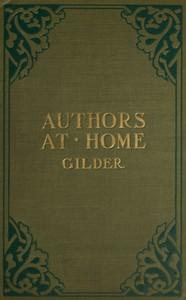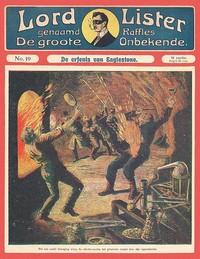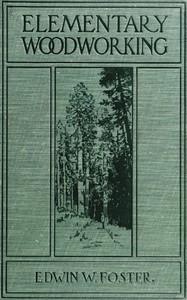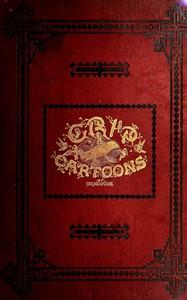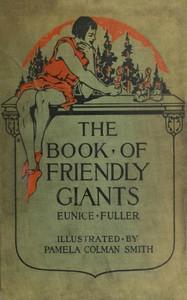|
|
Read this ebook for free! No credit card needed, absolutely nothing to pay.Words: 63211 in 9 pages
This is an ebook sharing website. You can read the uploaded ebooks for free here. No credit cards needed, nothing to pay. If you want to own a digital copy of the ebook, or want to read offline with your favorite ebook-reader, then you can choose to buy and download the ebook.

: Authors at home: Personal and biographical sketches of well-known American writers by Gilder Jeannette L Jeannette Leonard Editor Gilder Joseph Benson Editor - Authors American Homes and haunts United States; Literary landmarks United States; United States@FreeBooksThu 08 Jun, 2023 s; and some of the lines in his massive lower face indicated the resoluteness which underlay his natural urbanity and kindness. Although his father came from Massachusetts and he himself was born in Providence, Mr. Curtis was identified with New York. In 1839, at the age of fifteen, he moved with his father to this city. Three years later he enlisted with the Brook Farm enthusiasts, but in 1844 withdrew to Concord, as Hawthorne had done. There, with his brother, he worked at farming, and continued to study until 1846, when he came back to New York, still bent upon preparing himself for a literary life, though he chose not to go to college. He went, instead, to Europe, remaining there and in the East for four years, six months of which he spent as a student at the University of Berlin. Yet, New Yorker as he was by long association, residence and interest, he had a close relationship with Massachusetts; partly through his marriage into a Massachusetts family of note--the Shaws; partly, perhaps, through the ties formed in those idyllic days at Brook Farm and Concord. And in Massachusetts he had another home, at Ashfield, to which he repaired every summer. It is an old farm-house on the outskirts of the village, which lies among beautiful maple-clad hills, between the Berkshire valley and the picturesque neighborhood of the Deerfields and Northampton. A number of years ago, with his friend Charles Eliot Norton, Mr. Curtis aided in founding a library for Ashfield, and he was so much of a favorite with his neighbors there, that they were anxious to make him their representative in Congress. He, however, seemed to prefer their friendship, and the glorious colors of their autumn woods, to their votes. Throughout the greater part of the fierce presidential campaign of 1884 Mr. Curtis conducted his voluminous work as editor and as independent chieftain in this quiet retreat. In 1875 it was to him that Concord turned when seeking an orator for the centenary of her famous "Fight"; and it was he again whom Boston, in the spring of 1883, invited to pronounce the eulogy upon Wendell Phillips. These are rather striking instances of Massachusetts dependence on a New York author and orator, discrepant from a theory which makes the dependence all the other way. Mr. Curtis's adversaries, in whatever else they may have been right, were apt to make two serious mistakes about him. One was, that they considered him a dilettante in politics; the other, that they overlooked his "staying-power." For over thirty-four years he not only closely studied and wrote upon our politics, but he also took an active share in them. A teacher of a true State policy, rather than a statesman--an inspiring leader, more than he was an organizer or executant--he yet did much hard work in organizing, and tried to perpetuate the desirable tradition that culture should be joined to questions of right in Government, and of the popular weal. Twenty years a lecturer, without rest; twenty-five years a political editor; thirty-six years the suave and genial occupant of the "Easy Chair"; always steadfast to the highest aims, and ignoring unworthy slurs;--may we not say reasonably that he had "staying power"? One source of it was to be found in the serene cheer of his family life in that Staten Island cottage to which he clung so closely, and among the well-loved Ashfield hills, where he long continued to show that power. GEORGE PARSONS LATHROP. DR. EDWARD EGGLESTON DR. EDWARD EGGLESTON AT LAKE GEORGE Owl's Nest, the summer retreat of Dr. Edward Eggleston, is picturesquely situated on Dunham's Bay, an arm of Lake George that deeply indents the land on the southeastern shore of the lake. This site was chosen partly because the land hereabout is owned by his son-in-law, and partly because of the seclusion the place affords from the main current of summer business and travel. With the utmost freedom of choice, a spot better suited to the needs of a literary worker with a family could hardly have been selected within the entire thirty-six miles covering the length of Lake George. Here, a few years ago, among black rocks, green woods, and blue waters, all pervaded by the breath of balsam, cedar, and pine, the author of "The Hoosier Schoolmaster," after various flights to other northern places of resort, built the nest which he has since continued to occupy during six months of the year , and in which he does the better part of his literary work, with material about him prepared at his winter home in Brooklyn. Owl's Nest consists of three architecturally unique and tasteful buildings, occupying a natural prominence on the western shore of the bay. One, the family cottage, is a handsome-looking and commodious structure of wood, liberally furnished in a manner becoming the artistic and literary proclivities of its occupants. A little below this, to the right, and nearer the lake shore, is a summer boarding-house, built by the owner of the farm for the accommodation of the friends and admirers of Dr. Eggleston, who annually follow his flight into the country--so impossible, as it would seem, is it to escape the consequences of fame. The third and most striking structure upon the grounds is Dr. Eggleston's workshop and library--his lasting and peculiar mark on the shores of Lake George, and the most prominent and elaborate piece of work of its kind to be found anywhere in northern New York. This was laid out by a Springfield, Mass., architect, after plans of the proprietor's own. It is built of brown sandstone quarried on the spot, and laid by local stone-workers, finished in native chestnut and cherry by home mechanics, and decorated without with designs, and within with carvings, by the hand of the author's artist-daughter, Allegra. Thus are secured for it at once a sturdy native character of its own, and a sylvan harmony and grace most pleasing to the fancy. Within this stronghold are arranged in due order the weapons of the literary champion--historian, novelist, and essayist--as well as the tools of his daughter, who has long been working in conjunction with her father in the production of the illustrated novel, "The Graysons," given to the world in 1888. It is into this stronghold that one is conducted on a Sunday afternoon, after the usual hearty hand-shake; especially if one's visit relates in any way to things literary, or to questions that are easiest settled in an atmosphere of books. You are led through a door opening at the rear of the building, toward the cottage; immediately opposite to which, upon entering, appears the entrance to the artist's studio; thence along a narrow passage traversing the length of the west wall and lined to the ceiling with books, through a doorway concealed by a pair of heavy dropping curtains, and into the author's study, occupying the south end of the building. Here you are seated in a soft chair beside a deep, red brick fireplace , and before a modern bay-window opening to the south. This window is, structurally, the chief glory and ornament of Dr. Eggleston's study--broad, deep, and high, filling fully one-third of the wall-space in the south end, and so letting into the room, as it were, a good portion of all out-doors. From this window is obtained a charming view of the finest points in the surrounding scenery. Directly in front stretches out for miles to the southward a broad expanse of marsh, through which winds in sinuous curves a sluggish creek that ends its idling course where the line of blue water meets the rank green of the swale. Just here extends from shore to shore a long causeway of stone and timber, over which runs the highway through the neighborhood. Flanking the morass on each side are two parallel lines of mountains, looking blue and hazy and serene on a still day, but marvelously savage and wild and threatening when a storm is raging. These are, respectively, the French Mountain spur on the west; and on the east a long chain of high peaks, which begins with the Sugar Loaf, three miles inland, approaches the eastern shore, and forms with the grand peaks of Black, Buck and Finch mountains a magnificent border to the lake as far down as the Narrows, where it terminates in the bold and picturesque rock of Tongue Mountain. This view constitutes almost the whole outlook from the spot, which is otherwise encroached upon by an intricate tangle of untamed nature--woods, cliffs and ravines, that back it up on the west, and flank it on either side down to the water's edge. Turning from the view of things outside to consider the things within, you find yourself, apart from the necessary furniture of the room, walled in by books, to apparently interminable heights and lengths. I think Dr. Eggleston told me he has here something like four thousand volumes, perhaps one-fourth of which may be classed as general literature; the rest being volumes old and new, of ever conceivable date, style and condition, bearing upon the subject of colonial history. These have been gathered at immense pains from the libraries and bookstalls of Europe and America. In his special field of work Dr. Eggleston long ago proved himself a profound student and a thorough and successful operator. But if books tire you, there is at hand a most interesting collection of souvenirs of foreign travel--pictures, casts, quaint manuscripts, etc.--besides rare autographs, curios, and relics of every sort, gathered from everywhere, all of which he shows you with every effort and desire to entertain. In common with other distinguished persons, Dr. Eggleston has undergone persecution by the inveterate collector of autographs. One claimant for a specimen of his penmanship, writing from somewhere in the Dominion, solicited a "few lines" to adorn his album withal; whereupon he went to his desk and, taking a blank sheet, drew with pen and ink two parallel black lines across it, added his signature, and mailed it promptly to the enclosed address. Free books android app tbrJar TBR JAR Read Free books online gutenberg More posts by @FreeBooks
: Lord Lister No. 0019: De erfenis van Eaglestone by Blankensee Theo Von Matull Kurt - Detective and mystery stories Periodicals; Dime novels Periodicals@FreeBooksThu 08 Jun, 2023

: Elementary woodworking by Foster Edwin W - Woodwork; Trees; Woodworking tools@FreeBooksThu 08 Jun, 2023
|
Terms of Use Stock Market News! © gutenberg.org.in2025 All Rights reserved.

